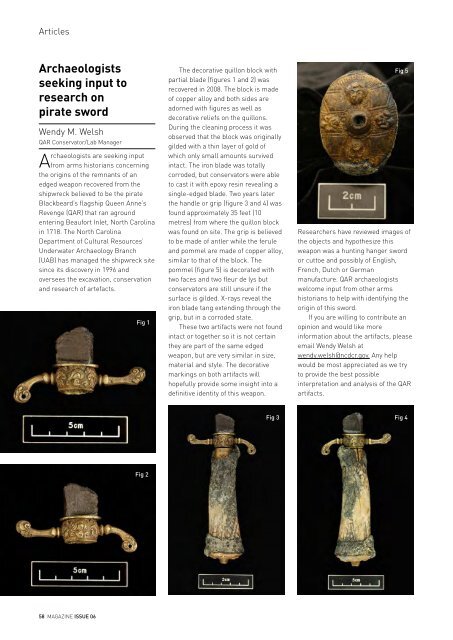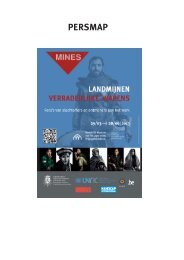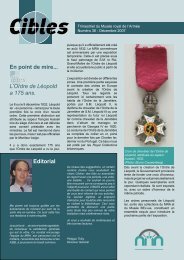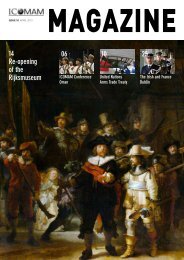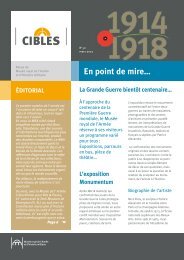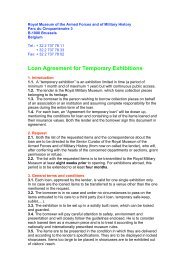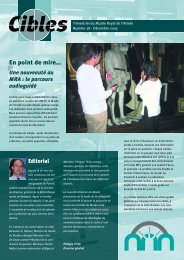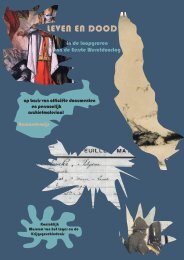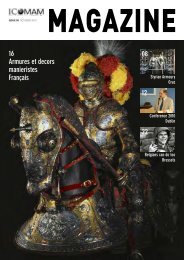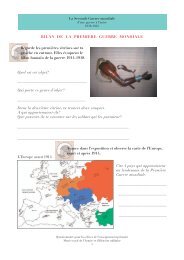Download issue 06 (High resolution) April 2011 (PDF, 3,9 MB)
Download issue 06 (High resolution) April 2011 (PDF, 3,9 MB)
Download issue 06 (High resolution) April 2011 (PDF, 3,9 MB)
Create successful ePaper yourself
Turn your PDF publications into a flip-book with our unique Google optimized e-Paper software.
Articles<br />
Archaeologists<br />
seeking input to<br />
research on<br />
pirate sword<br />
Wendy M. Welsh<br />
QAR Conservator/Lab Manager<br />
Archaeologists are seeking input<br />
from arms historians concerning<br />
the origins of the remnants of an<br />
edged weapon recovered from the<br />
shipwreck believed to be the pirate<br />
Blackbeard’s flagship Queen Anne’s<br />
Revenge (QAR) that ran aground<br />
entering Beaufort Inlet, North Carolina<br />
in 1718. The North Carolina<br />
Department of Cultural Resources’<br />
Underwater Archaeology Branch<br />
(UAB) has managed the shipwreck site<br />
since its discovery in 1996 and<br />
oversees the excavation, conservation<br />
and research of artefacts.<br />
Fig 1<br />
The decorative quillon block with<br />
partial blade (figures 1 and 2) was<br />
recovered in 2008. The block is made<br />
of copper alloy and both sides are<br />
adorned with figures as well as<br />
decorative reliefs on the quillons.<br />
During the cleaning process it was<br />
observed that the block was originally<br />
gilded with a thin layer of gold of<br />
which only small amounts survived<br />
intact. The iron blade was totally<br />
corroded, but conservators were able<br />
to cast it with epoxy resin revealing a<br />
single-edged blade. Two years later<br />
the handle or grip (figure 3 and 4) was<br />
found approximately 35 feet (10<br />
metres) from where the quillon block<br />
was found on site. The grip is believed<br />
to be made of antler while the ferule<br />
and pommel are made of copper alloy,<br />
similar to that of the block. The<br />
pommel (figure 5) is decorated with<br />
two faces and two fleur de lys but<br />
conservators are still unsure if the<br />
surface is gilded. X-rays reveal the<br />
iron blade tang extending through the<br />
grip, but in a corroded state.<br />
These two artifacts were not found<br />
intact or together so it is not certain<br />
they are part of the same edged<br />
weapon, but are very similar in size,<br />
material and style. The decorative<br />
markings on both artifacts will<br />
hopefully provide some insight into a<br />
definitive identity of this weapon.<br />
Fig 5<br />
Researchers have reviewed images of<br />
the objects and hypothesize this<br />
weapon was a hunting hanger sword<br />
or cuttoe and possibly of English,<br />
French, Dutch or German<br />
manufacture. QAR archaeologists<br />
welcome input from other arms<br />
historians to help with identifying the<br />
origin of this sword.<br />
If you are willing to contribute an<br />
opinion and would like more<br />
information about the artifacts, please<br />
email Wendy Welsh at<br />
wendy.welsh@ncdcr.gov. Any help<br />
would be most appreciated as we try<br />
to provide the best possible<br />
interpretation and analysis of the QAR<br />
artifacts.<br />
Fig 3 Fig 4<br />
Fig 2<br />
58 MAGAZINE ISSUE <strong>06</strong>


